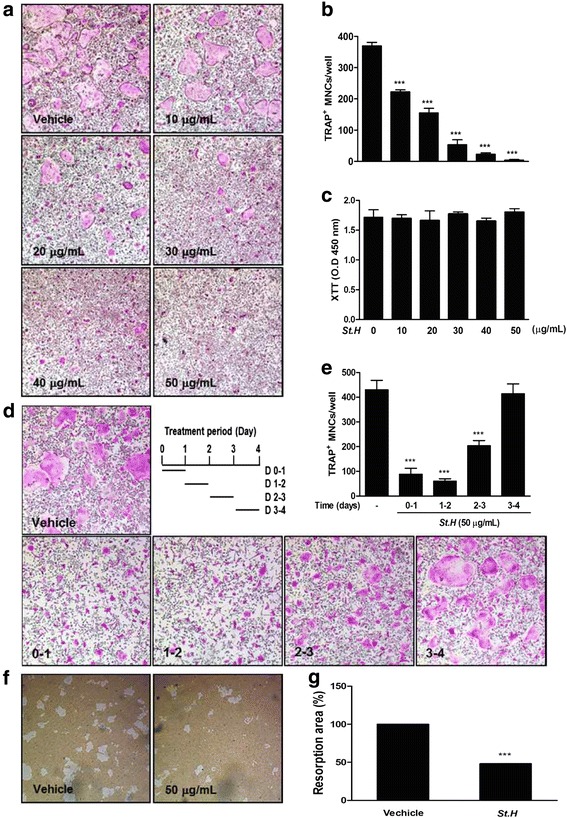Fig. 1.

S. hexaphylla suppresses RANKL-induced osteoclast differentiation in BMMs and bone resorption by co-cultured mature osteoclasts. a BMMs were cultured with M-CSF (30 ng/mL) and RANKL (100 ng/mL) for 3 days in the presence or absence of S. hexaphylla. b After culturing, cells were fixed with 3.7 % formalin in PBS, permeabilized with 0.1 % Triton X-100 in PBS, and stained with TRAP staining solution; TRAP-positive MNCs were then counted. c BMMs were cultured for 3 days with the indicated doses of S. hexaphylla in the presence of M-CSF (30 ng/mL). Cell viability was analyzed using an XTT assay. d BMMs were cultured as in (a), except that the cells were treated with S. hexaphylla on the indicated days. e After culturing, cells were fixed, and the number of TRAP-positive MNCs was counted. f pOBs and BMCs were co-cultured on a collagen-matrix-coated plate for 6 days, and the flourishing osteoclasts were harvested. Mature osteoclasts were seeded on hydroxyapatite-coated plates with or without S. hexaphylla for 24 h. Attached cells on the plates were removed and photographed under a light microscope. Pit areas were quantified using Image J (g), and bone resorption numbers were counted using a light microscope. *** P < 0.001; versus vehicle (DMSO)
